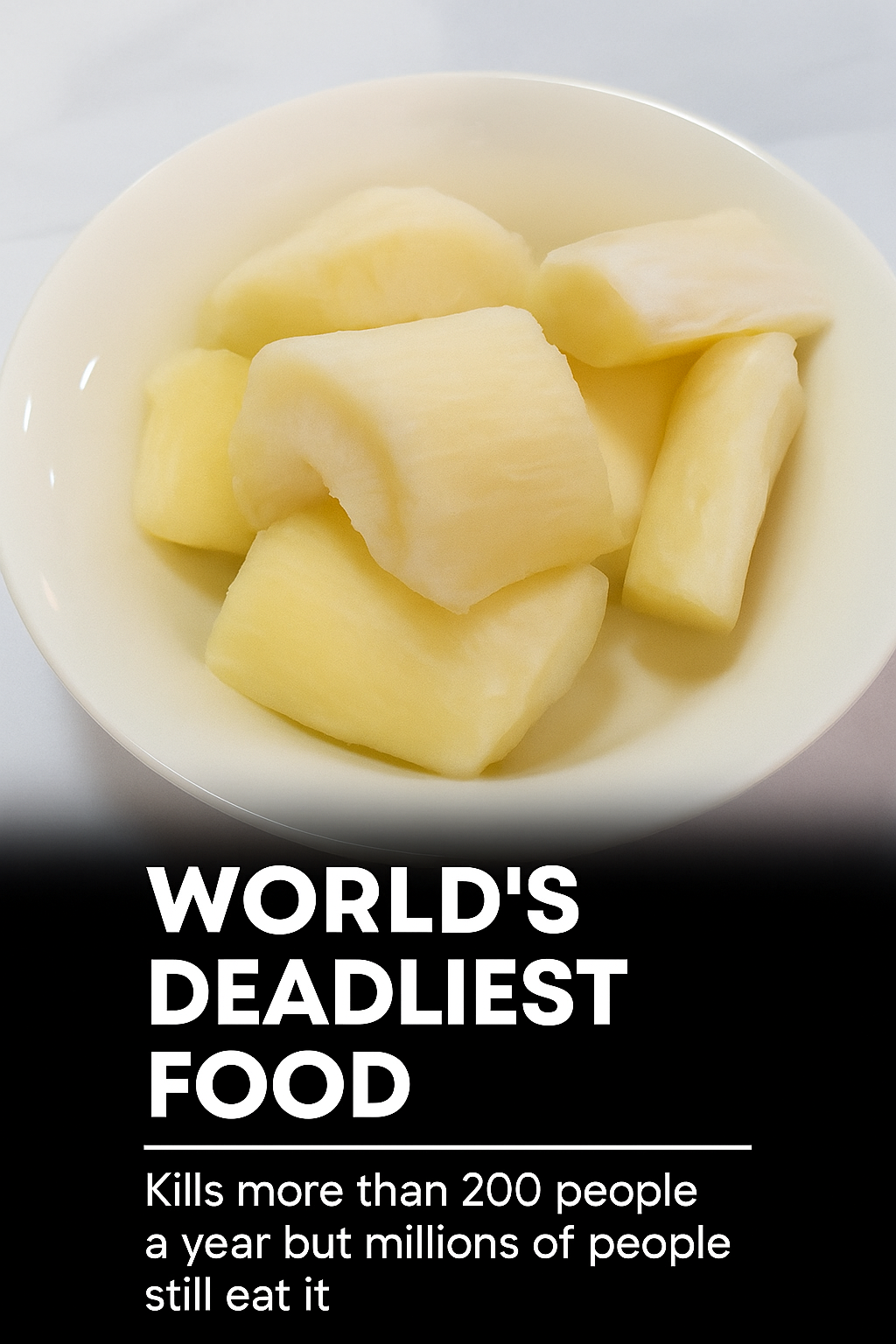It feeds millions. It fuels economies. It’s a staple in diets across Africa, South America, and the Caribbean. And yet, this everyday root vegetable can be deadly.
Meet cassava — a humble, starchy tuber that sustains nearly 500 million people worldwide, but also earns the grim title of “the world’s deadliest food” when improperly prepared.
Every year, over 200 people die from cassava-related poisoning — and thousands more suffer permanent paralysis or neurological damage. Yet, paradoxically, it remains a lifeline for communities where food security is fragile.
How can a food be both so essential and so dangerous?
What Is Cassava?
Cassava (also known as yuca, not to be confused with yucca the ornamental plant) is a hardy, drought-resistant root vegetable native to South America. Its starchy flesh is a rich source of carbohydrates, making it a vital calorie source in tropical regions.
It comes in two main types:
Sweet cassava – Lower in toxins, safer to eat with basic cooking.
Bitter cassava – Contains high levels of cyanogenic glycosides, which release cyanide when consumed.
Fun fact: Tapioca pearls, garri, fufu, and cassava flour are all made from cassava.
Why Is Cassava Dangerous?
The danger lies in how it’s processed.
Bitter cassava naturally contains linamarin, a compound that converts into hydrogen cyanide when the plant cells are damaged (e.g., during peeling, grating, or chewing).
If not properly detoxified, eating bitter cassava can lead to:
Acute cyanide poisoning – Symptoms include nausea, dizziness, rapid breathing, convulsions, and death within hours.
Konzo – A paralyzing neurological disease affecting the legs, primarily seen in malnourished populations in Central Africa.
Tropical ataxic neuropathy – A chronic condition causing blindness, deafness, and loss of coordination.
In fact, cassava is responsible for more cases of food-related cyanide poisoning worldwide than any other food crop, according to the World Health Organization.
How Does Poisoning Happen?
Cyanide poisoning from cassava is not random — it’s often the result of survival under extreme conditions:
Drought or famine – Forces people to harvest cassava too early, when cyanide levels are highest.
Lack of water – Prevents proper soaking and washing.
Poverty and food insecurity – Limits access to diverse diets, making people reliant on a single, risky crop.
Lack of knowledge or time – Traditional detox methods are skipped due to urgency.
In many cases, families eat cassava that hasn’t been soaked, fermented, dried, or cooked long enough to remove the toxins.
How to Make Cassava Safe to Eat
The good news? Cassava can be made completely safe through proper preparation. Traditional methods, passed down for generations, are remarkably effective at removing cyanide.
Safe Preparation Steps:
Peel the root – Most toxins are concentrated in the skin.
Soak in water for 1–3 days – Fermentation breaks down cyanide compounds.
Grate and squeeze – Removes toxic liquid.
Dry in the sun – Further reduces moisture and toxins.
Cook thoroughly – Boiling, roasting, or frying neutralizes any remaining cyanide.
When these steps are followed, cassava is not only safe — it’s nutritious, providing energy, fiber, and small amounts of calcium, vitamin C, and B vitamins.

